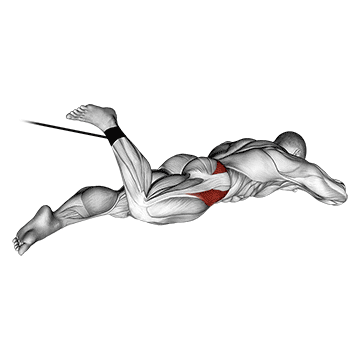The Band Lying Hip Internal Rotation exercise is a resistance band exercise that targets the internal rotators of the hip muscles. This exercise helps to improve hip mobility and strength, which can be beneficial for activities like running, jumping, and squatting.
How to perform
To perform the Band Lying Hip Internal Rotation exercise, follow these step-by-step instructions:1. Start by lying on your back on a mat or a flat surface. Bend your knees and place your feet flat on the ground, about hip-width apart.
2. Place a resistance band around both thighs, just above the knees. Make sure the band is tight enough to provide resistance, but not so tight that it causes discomfort.
3. Engage your core muscles to maintain a stable pelvis position throughout the exercise.
4. Keeping your feet flat on the ground, slowly rotate your hips inward, bringing your knees together. Focus on using the muscles on the inside of your thighs to perform this movement.
5. Hold the inward rotation position for a few seconds, then slowly return to the starting position. Make sure to control the movement to avoid any jerky motions.
6. Perform 2-3 sets of 12-15 repetitions on each side, or as recommended by your fitness instructor.
7. Remember to breathe steadily throughout the exercise and avoid holding your breath.
By incorporating the Band Lying Hip Internal Rotation exercise into your workout routine, you can help to strengthen and improve the flexibility of your hip muscles, ultimately enhancing your overall performance and reducing the risk of injuries.
Equipment required
Band
Band equipment consists of elastic bands or tubes that provide resistance during exercises. They are commonly used to strengthen and tone muscles, improve flexibility, and increase range of motion. Bands are versatile and can be used for a variety of exercises targeting different muscle groups, making them suitable for strength training, rehabilitation, and physical therapy. The resistance levels can be adjusted based on the tension of the band, allowing for progressive overload and customization for individual fitness levels.


